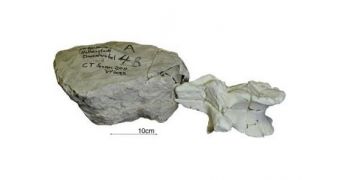Scientists with the Department of Radiology at the Charité Campus Mitte, in Berlin, say that they have developed a method of combining data from computer tomography (CT) scans with the capabilities of three-dimensional (3D) printers, in order to create extremely accurate and detailed copies of fossils.
This is a tremendous achievement, since many museums have to deal with crumbling samples that cannot be readily handled. With the new approach, entire collections of fossilized bones could be transferred to plastic without losing any of the details scientists need to conduct their work.
At this point, fossils are usually protected by encasing them in plastic. This means that experts have to peel away this protective layer every time they want to analyze the artifact. By using CT scans, the German team demonstrated that this is no longer necessary, EurekAlert reports.
The photos the imaging device takes are then fed into a 3D printer, which uses plastic or other materials to create an accurate copy of the artifact or fossils, without having to remove it from its casing. This approach is both safer and more time-efficient than any other currently available, the team concludes.

 14 DAY TRIAL //
14 DAY TRIAL //